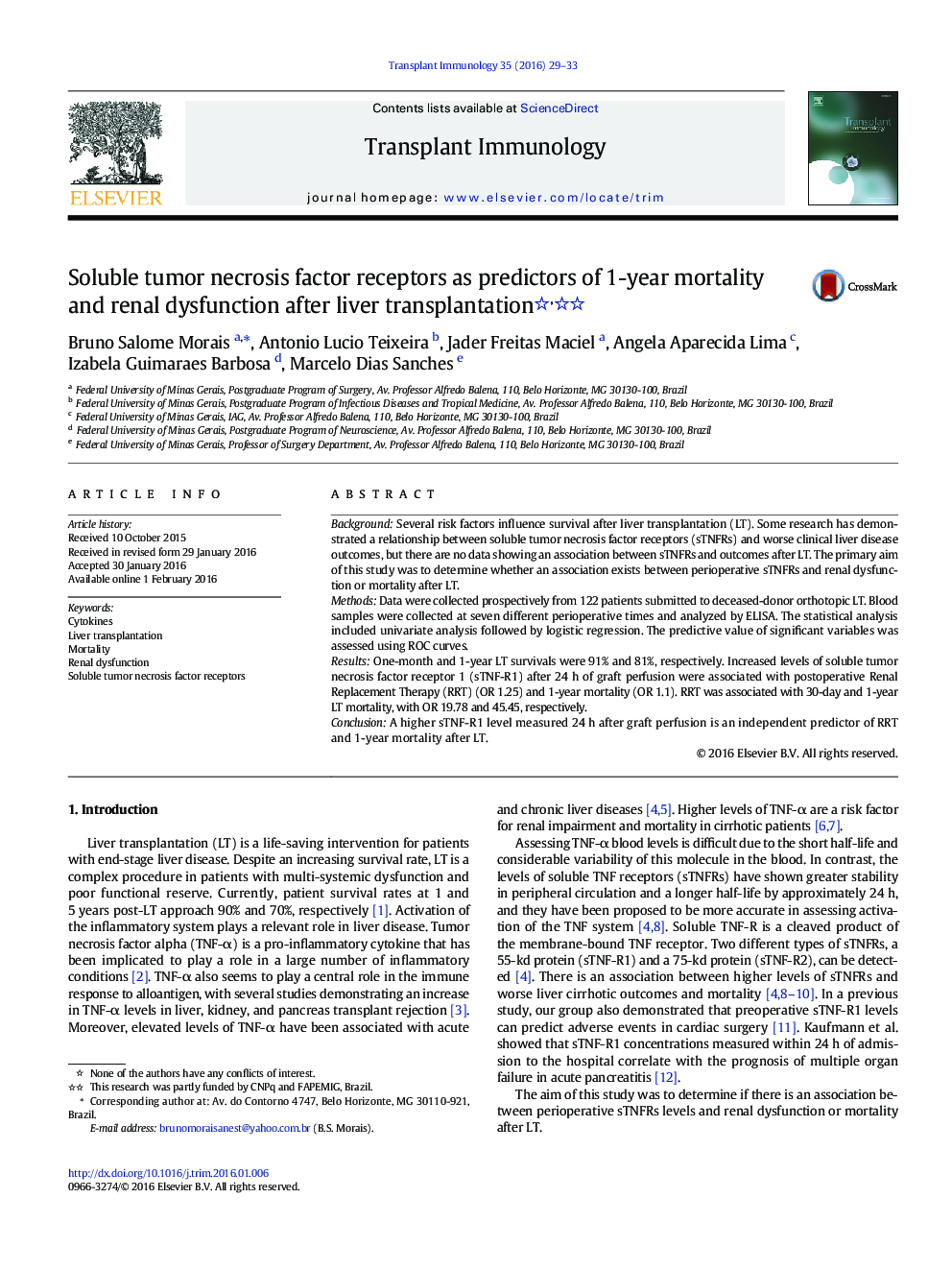| Article ID | Journal | Published Year | Pages | File Type |
|---|---|---|---|---|
| 3392014 | Transplant Immunology | 2016 | 5 Pages |
•Soluble TNF-R1 is a predictor of postoperative renal dysfunction and 1-year mortality after LT.•Soluble TNF-R2 does not predict outcomes after LT.•RRT is associated with 30-day and 1-year LT mortality.
BackgroundSeveral risk factors influence survival after liver transplantation (LT). Some research has demonstrated a relationship between soluble tumor necrosis factor receptors (sTNFRs) and worse clinical liver disease outcomes, but there are no data showing an association between sTNFRs and outcomes after LT. The primary aim of this study was to determine whether an association exists between perioperative sTNFRs and renal dysfunction or mortality after LT.MethodsData were collected prospectively from 122 patients submitted to deceased-donor orthotopic LT. Blood samples were collected at seven different perioperative times and analyzed by ELISA. The statistical analysis included univariate analysis followed by logistic regression. The predictive value of significant variables was assessed using ROC curves.ResultsOne-month and 1-year LT survivals were 91% and 81%, respectively. Increased levels of soluble tumor necrosis factor receptor 1 (sTNF-R1) after 24 h of graft perfusion were associated with postoperative Renal Replacement Therapy (RRT) (OR 1.25) and 1-year mortality (OR 1.1). RRT was associated with 30-day and 1-year LT mortality, with OR 19.78 and 45.45, respectively.ConclusionA higher sTNF-R1 level measured 24 h after graft perfusion is an independent predictor of RRT and 1-year mortality after LT.
